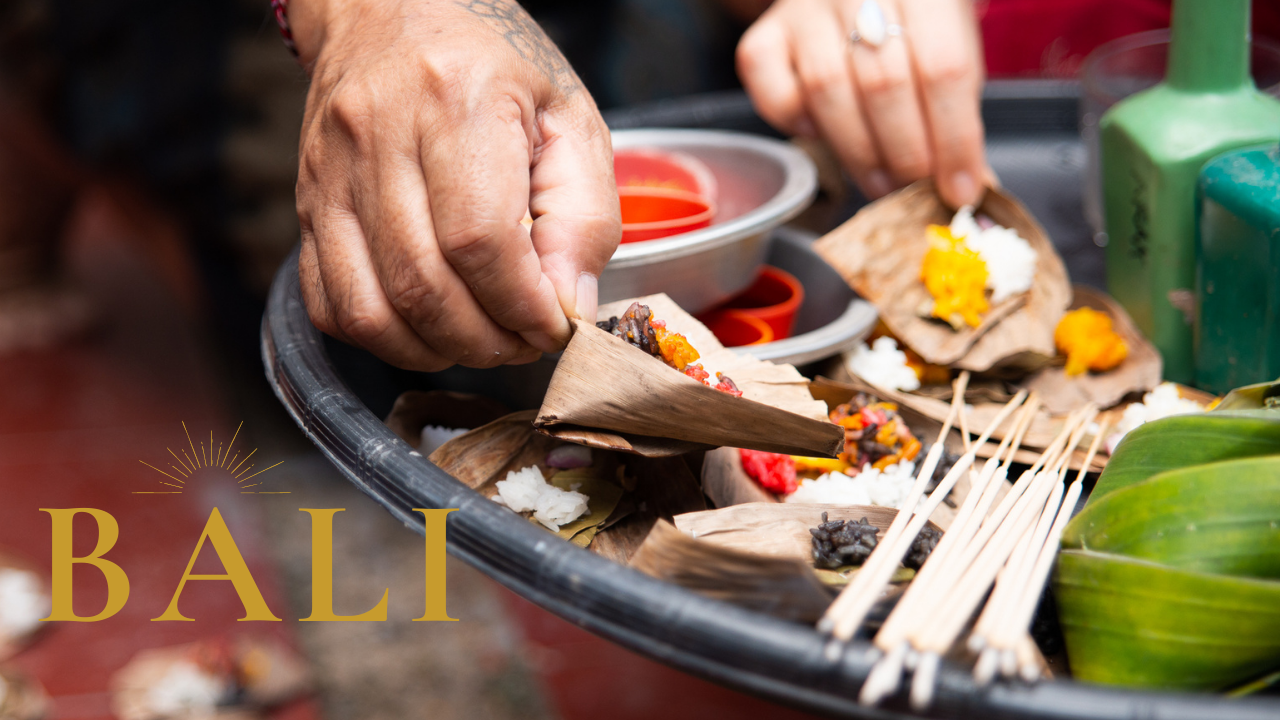Canang Sari: A Daily Offering in Bali

Canang Sari are daily Balinese offerings for our gods and can be found everywhere throughout Bali. Based on the beliefs of the Balinese, those who embrace Balinese Hinduism (Agama Hindu), the purpose of Canang Sari is to create a balance in the universe – that which you can see ‘sekala’ and that which you can’t see ‘niskala’.
What is Canang Sari?
It is a daily offering to our God Sang Hyang Widhi Wasa as an expression of gratitude and prayer. If you have ever been to Bali, you would have seen them in temples, on the ground, attached to cars and motorcycles, etc.
Many tourists go to Bali seeing these offerings everywhere but don’t really know why we place them down in our temples and what they represent.
What does Canang Sari represent?
Canang sari are intricate and consist of woven coconut leaves and are filled with various ingredients. What you see are flowers within the base ‘cepar’ of the offering but below them are smalls pieces of lime, betal leaf, betal nuts and gambier which represent Trimurti the three Hindu Gods -Shiva, Vishnu and Brahma.
The colourful flowers are strategically placed on top of the raka-raka and sampian urasari – each colour pointing to a direction:
- White flowers points east representing Iswara
- Red flowers point south representing Brahma
- Yellow flowers point west representing Mahadeva
- Blue or green flowers point north representing Vishnu
Daily Ritual of Offering Canang Sari
The most commonly seen offerings are canang sari however we have many different types of ‘canang’ that are used on special ceremonies and occasions. Often people place a lolly/candy, cigarette or money onto a canang sari to give thanks to the Gods and spirit world for looking over us.
These offerings are spread throughout homes and temples and are strategically placed. Those that are higher up for example within temples are offered to Gods, ancestors and higher spirits and the offerings on the ground are to honour the lower spirit world. As we believe in the equilibrium of life – if we give to the higher spirits, we must also give to the lower spirits. Burning incense, holy water and sometimes the tap of a knife on the ground are the rituals that follow the placing of the offerings with words spoken within when placing the offerings down.
Making Canang Sari
Once upon a time it was very common for the offerings to be made by family members but today you can find marketplaces filled with a ‘canang’ section with big bags filled with freshly made canang sari or bags of flowers ready to be handmade at home.
I helped assist a Spiritual Art Retreat in Bali a few years ago and my step-mum Dewi and I ran a ‘how to make canang sari’ workshop.

We intentionally created these beautiful pieces of art and offerings together and later would use them in a ceremony at my Balinese home temple – where my Dad and I spoke of offerings, honouring our ancestors, the spirit world and importance of ritual and prayer to the Balinese.
When visiting Bali next please try to not step on or over offerings in the street especially those that have incense burning on them. Pay your respects and if this happens don’t worry – apologise inside or to any Balinese nearby. Enjoy the beauty and spiritual nature of canang sari next time you’re in Bali.

